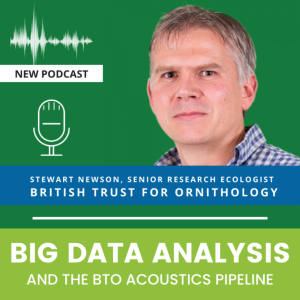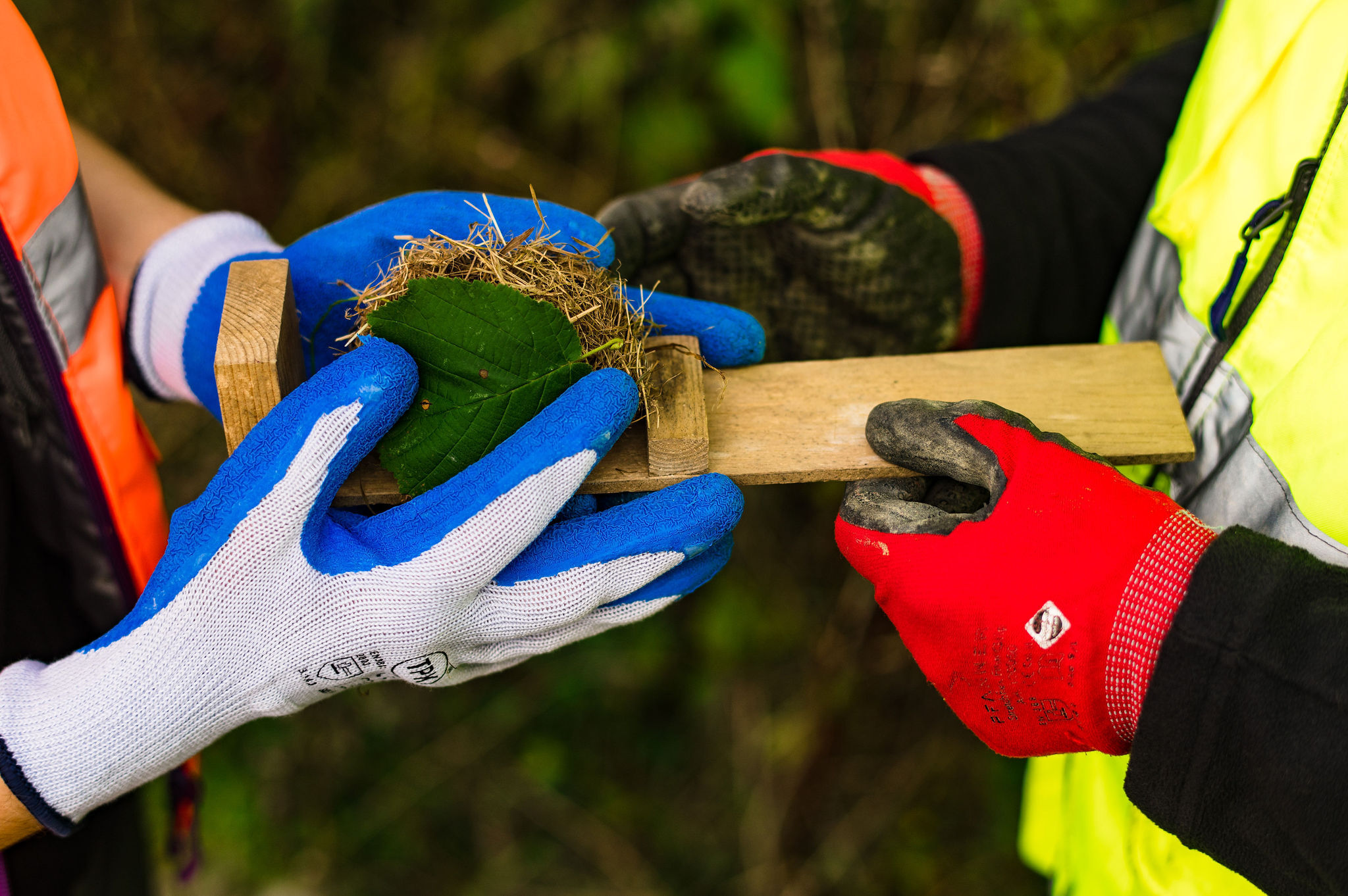
23K
Downloads
53
Episodes
A monthly show where we get to talk and learn about all things ecological, including interviews with top ecologists (both employers and employees), those working with ecologists, and also aspiring and inspiring career-seeking individuals setting out to make a difference. New episodes released first Monday of the month.
Episodes

Monday Aug 01, 2022
Monday Aug 01, 2022
A not to be missed interview with Stuart Newson, lead scientist for the BTO Acoustic Pipeline, which brings cutting-edge sound identification of bats and other nocturnal wildlife to your desktop.
During the interview, Richard discusses Stuart's love for big data analysis and problem solving and his work with the BTO. We talk about his career profile as a researcher and how his desire to identify and understand what bats were in and around Norwich set him up to launch a county wide programme for the whole of Norfolk and led him to develop the BTO Acoustic Pipeline.
The Pipeline currently focuses on 34 species of European bat, but also identifies 14 small mammal species, 18 bush-cricket species and 2 moth species, where these are recorded as by-catch.
Top bat detector recording tips include:
Consider the placement of your microphone - Ideally the microphone, or detector (if the microphone is inbuilt) should be pole mounted, raised up into the bat’s flyway, and positioned at least 1.5 meters away from any flat surfaces or vegetation. The worst thing that can be done is to attach a detector, particularly if it has an inbuilt microphone to a flat surface like a tree trunk, or to try and hide the detector and microphone within or close to vegetation. This can result in acoustic mush, that is difficult to do much with by any means, particularly for some of the more cryptic species where recording quality is most critical.
Positioning yourself near a bat roost - If recording at a bat roost, the performance of the pipeline will be considerably better if you position the bat detector directly away from emergence itself (10-15 meters away). If recording directly at emergence, the calls of bat are often elevated in frequency and are not very typical of the calls of free-flying individuals, on which the pipeline was trained. The performance of the pipeline is also likely to be reduced if recording is carried out inside a bat roost. In this situation, echolocation calls are often atypically short in duration (in extreme clutter), a broad range of social calls are often produced in this situation that are not encountered outside a roost, and the recordings can often be distorted, and or otherwise of poor quality.
Chose your file type to suit the purpose of your survey - It is also recommended that you do not convert full spectrum recordings to zero-crossing before auditing the recordings / results. This is most likely to be done by bat workers who have used zero-crossing in the past, but it will result in a significant proportion of recordings that would have be assigned to species, being missed. It may also introduce biases in your data, which could influence your interpretation, which I will explain with an example. Suppose that bat recording is carried out at two locations, where there is similar level of barbastelle (Barbastella barbastellus) activity. However, at one location, there is also high bushcricket activity. The pipeline is efficient at finding weak barbastelle calls in noisy recordings like this, so based on the pipeline, the activity of barbastelle according to the pipeline should be similar. However, when the recordings are converted to zerocrossing, the barbastelle calls may be lost where there are noisy bush-crickets. This example highlights why converting full spectrum recordings to zero-crossing for auditing should be avoided, and that it has the potential to result in an incorrect interpretation.
Standardise your bat detector settings - Bat detectors are increasingly moving toward embedding metadata associated with e.g. the recording location, date and time in the wav file, using GUANO Metadata, which is a universal, extensible, open metadata format for bat acoustic recordings. It is important that wav files are named as described Bat detector file settings.
Standardise your length of recordings/calls - Lastly, and specific to the pipeline we recommend that bat detector settings are used that define the maximum wav file length to be 5 seconds. 5 seconds is the optimum for the pipeline to be able to identify multiple species in a recording. Longer recordings can be uploaded and will be processed by the pipeline, but it is important to understand that long recordings are split automatically by the desktop app into 5 second sections before they are processed. Note that the desktop app provides the option for the user to save a copy of the wav files as they will be processed, so including split wav files.
Stuart Newson Bio:
Senior Research Ecologist in the Population Modelling and Ecology Research Team with the British Trust for Ornithology.
He’s responsible for survey design and analysis of data from large national surveys of wild bird and mammal populations. Projects include a number of collaborations involving the large-scale analyses of bat and bird survey data with UK and overseas university academics and NGO researchers.
He has been awarded the Marsh Award for Innovative Ornithology, a Member of Natural England’s Bat Expert Panel and Member of UK Avian Population Estimates Panel, a Research Fellowship on Bioacoustics, PhD and MSc supervisor and Norwich Bat Group committee member.
Whilst the core of his work has been on birds, he has a personal interest in bats and acoustic monitoring, and in particular how technology can deliver new opportunities for conservation and provide new ways to engage with larger audiences. Stuart is the lead scientist for the BTO Acoustic Pipeline, which brings cutting-edge sound identification of bats and other nocturnal wildlife to your desktop.

No comments yet. Be the first to say something!